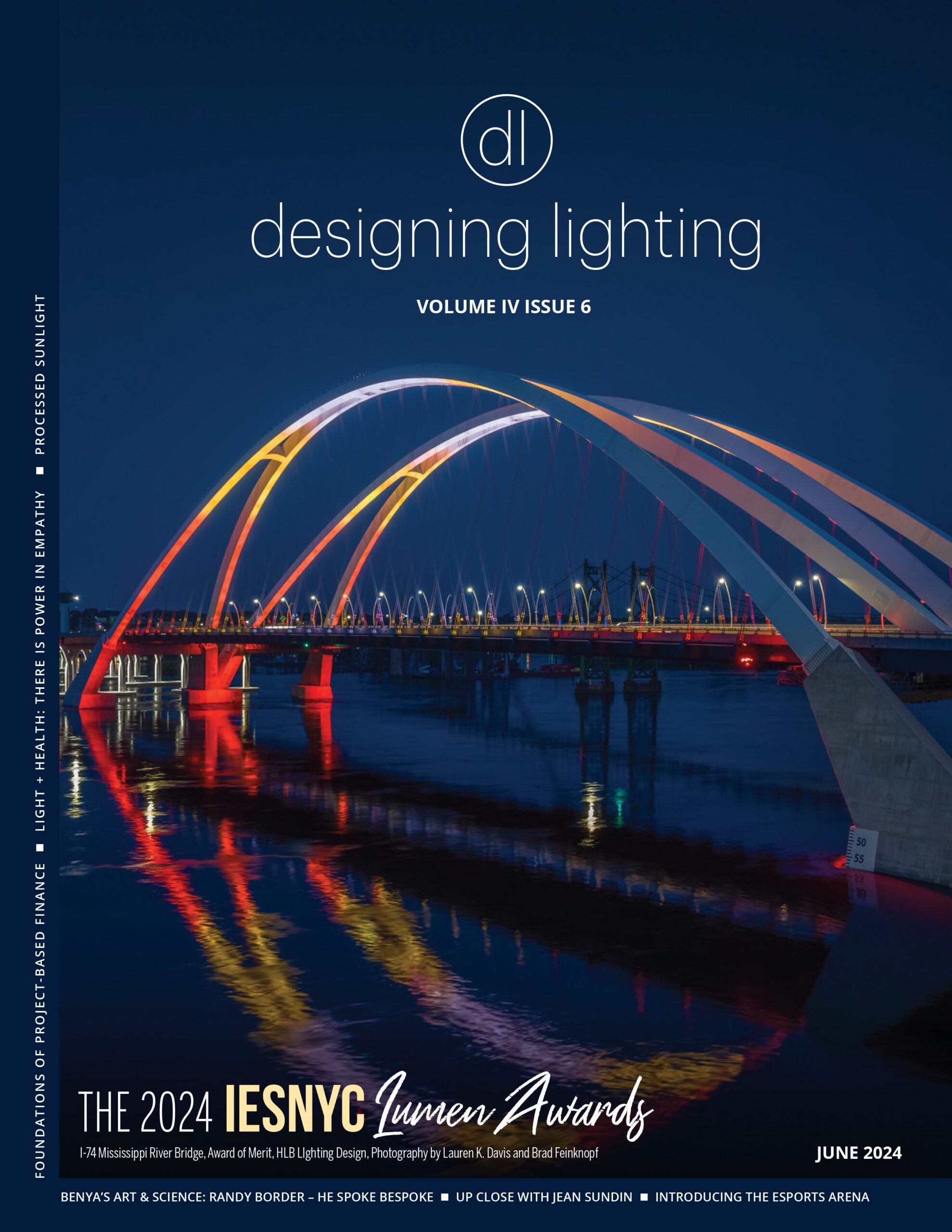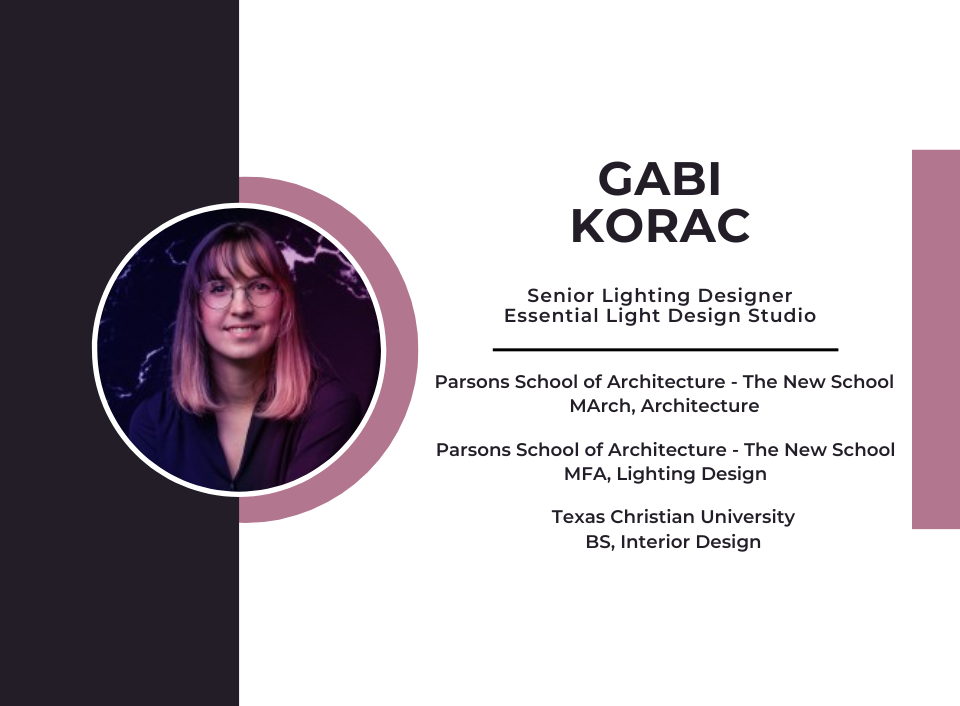From an early age, Gabi Korac was captivated by architecture. She always dreamed about becoming an architect, even when all she could do was just dream about it. As she grew up, she set out to learn more about the profession, and her interest in architecture eventually led her from her home in Croatia to Texas Christian University in Fort Worth, Texas.
Sometimes, even the best made plans can change, and life at TCU presented some challenges. As a student athlete, she initially set out to both swim and study architecture. But spending time in the studio meant less time in the pool. Balancing the demands of both wasn’t feasible, so she switched to studying interior design instead. The decision proved fruitful as it introduced her to lighting design. As she dove deeper into the world of lighting, her interest in and appreciation of the field grew. Still maintaining the goal of becoming an architect, she had a realization – to be a great architect, she needed to master lighting. “Lighting can make or break the space,” she explained. And so, her journey into lighting design took off.
Following an internship with architecture and design firm Gensler, Gabi joined the team at Essential Light Design Studio as a part-time lighting designer. This allowed her to simultaneously pursue a Master’s Degree at Parsons School of Design, where she fulfilled her dream of becoming an architect. She also completed a Masters of Fine Arts in Lighting Design. “I don’t know if I followed lighting, or if lighting followed me. It’s always there. It’s hard to escape it,” she quipped. And so, she returned full time to ELDS, where she has since been promoted to Senior Lighting Designer.
When characterizing the job of a lighting designer, Gabi highlighted two important aspects. First, a lighting designer must be a great observer of the phenomenon of light. Lighting designers have to understand how light behaves in a space and how it affects the people in that space. And, second, they have to be a great communicator of light. They have to be able to explain both the scientific and artistic aspects of light to their clients in order to create a space that satisfies the client.
Take, for example, a recent project she completed, an exhibit called The Science Behind Pixar at the Perot Museum of Nature and Science in Dallas, Texas. “As a lighting designer,” she said, “before I even get to work on drawings, I have to understand the story being told in order to see how the lighting will respond.” What are the surfaces? What is being illuminated? How do you engage people to walk through and experience the space? These are all questions a lighting designer must be able to answer and communicate with his or her clients.
The days on the job are dynamic, each different from the previous one. She typically has several projects going at once, each in a different stage of development. This requires flexibility – an ability to switch from creative mode when working on the design of a project to technical mode when reviewing construction documents on another.
Her favorite part of a job is the final aim and tune, when everyone is on-site, and everything is coming to completion. This final phase is very rewarding, she noted. It is the culmination of several years’ worth of work, the payoff for all of those hours spent doing mockups and photometric calculations.
What changes has she seen in her short time in the industry? The first is the shift to remote work. While not unique to the lighting world – I think every industry has had to figure out how to work virtually – this shift does present unique challenges to an industry where being on-site is so valuable. Although some areas of lighting design can be done remotely, a Zoom call can’t adequately capture the feeling of lighting in a space. “When it comes to lighting for lighting’s sake, to be there in person is still crucial,” she explained.
The second major change has been the complete takeover of LEDs. “Ever since I started, 99% of the products I have specified have been LEDs,” she noted. LEDs offer unmatched energy efficiency, and the industry is very focused on that variable. So, a 9W LED versus a 60W incandescent bulb, each producing the same amount of light? The choice is easy. But, what about the quality of light that the bulb produces? That variable, she insists, is something that needs to be more heavily considered. That is an area in which LEDs still have plenty of room for improvement, and one reason why Gabi feels lighting designers will continue to be an integral part of creating comfortable, attractive spaces.
Finally, Gabi shared a mantra that she tries to keep in mind throughout her work: you are at your best when I’m at my best, and I’m at my best when you are at your best. Creativity perpetuates itself. Design is a team sport, best done in collaboration with others. With this approach, the future is bright for Gabi, and the industry is in good hands.



